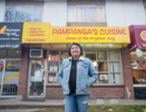B.C.'s income gap has been growing for 15 years, says B.C. Statistics in a recent report, and only Alberta has more after-tax income inequality than we do.
In the report, Mind the Gap: Income Inequality Growing, B.C. Stats said:
The Organization for Economic Cooperation and Development (OECD) released a study in December 2011 that confirmed that the gap between the rich and poor is indeed growing. This was true in most of the member countries of the OECD and Canada was no exception.
In fact, the OECD found that Canada had greater income inequality than most OECD nations. Canada ranked 26th out of 34 countries as measured by the Gini coefficient of income inequality. In addition, the report found that the income gap has been growing over time.
Based on data from 2008, the average income of the top 10% of Canadians was ten times higher than the bottom 10%, which is a signif- icant increase from the early 1990s, when the ratio was eight to one.
B.C. Stats noted a growth in the Gini coefficient, a measure of inequality in which zero reflects total equality and 1 reflects total inequality:
According to Statistics Canada, there has been significant growth in income inequality in both BC and Canada as a whole over the last 15 years. Through the 1980s and 1990s the Gini coefficient of income inequality for British Columbia averaged 0.29, but from 2000 to 2009, it averaged 0.33.
Among the provinces, only Alberta registered more after-tax income inequality than BC in 2009. The only other province above the Canadian average was Ontario. Prince Edward Island had the smallest income gap among the provinces.
Compared to other provinces, BC ranked dead last in 2009, with the largest gap between the top 20% and the bottom 20% of income earners. The Canadian average was 18.4%, almost two full percentage points above BC, but Alberta (17.0%) and Ontario (17.9%) were the only other provinces with a gap larger than the Canadian average. Prince Edward Island fared the best with the lowest 20% of earners in that province making 26.2% of what the top 20% of earners made (after transfers and taxes).
Data from Statistics Canada's 2009 Survey of Household Spending paint an interesting pic- ture of the differences in expenditure patterns between those with lower incomes and those with higher incomes. For the bottom 20% of earners, food, shelter and clothing comprise half of all expenditures, compared to only 30% of spending for the top 20% of income earners.
Health care and education costs represent another 10% of spending for the bottom 20% of earners and just under half that for the top 20%.
... In a free market society like Canada there will always be some that are better off than others, but the challenge is figuring out how large a gap between the highest and lowest earners should be considered acceptable. Given the size and vehemence of the Occupy protests, one would suspect that the current income gap is too large.
Crawford Kilian is a contributing editor of The Tyee.










What have we missed? What do you think? We want to know. Comment below. Keep in mind:
Do:
Do not: